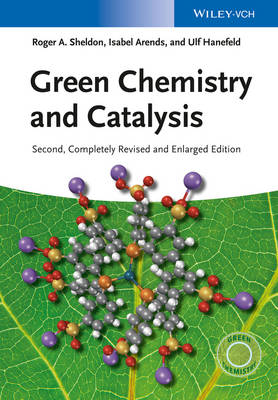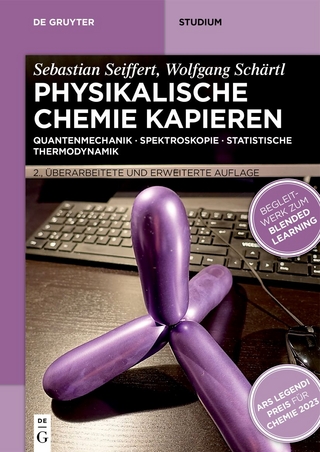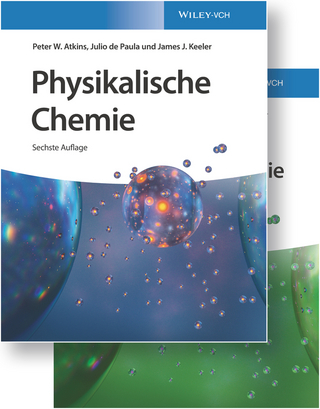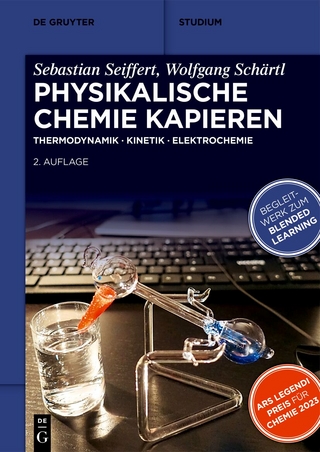
Green Chemistry and Catalysis
Wiley-VCH Verlag GmbH
978-3-527-32947-2 (ISBN)
The book retains its impressive scope, discussing and analyzing homogeneous, heterogeneous and biocatalysis equally. In addition, reactions and processes are examined from the current viewpoint, as well as how they can be improved and which green and sustainable alternatives are available.
The result is a unified, indispensable source for all scientists interested in green chemistry and improving their catalytic reactions, whether in academia or industry.
Prof. Roger Sheldon recently retired from his position as Chair of Biocatalysis and Organic Chemistry, Delft University of Technolgy, The Netherlands. His research career started with a PhD at the University of Leicester, United Kingdom and a postdoctoral stay with Jay Kochi at Indiana University, USA. Roger Sheldon then joined the Shell laboratories in Amsterdam. He later became Research Director at Andeno (subsequently acquired by DSM). After a part–time professor appointment at the Eindhoven University of Technology, The Netherlands, he then took up his position at the Delft University of Technology in 1991. He is CEO of the spin–off company CLEA Technologies, which he founded in 2002. Prof. Isabel Arends is Full Professor and Group leader in Biocatalysis and Organic Chemistry, Delft University of Technology, The Netherlands. Prof. Arends received her PhD in Physical Organic Chemistry in 1993 from the University of Leiden, The Netherlands under the supervision of Prof. Robert Louw. Postdoctoral work followed with Prof. Keith Ingold at the National Research Council, Canada. She then joined the group of Prof. Roger Sheldon at the Delft University of Technology in 1995, and joined the faculty of the Department of Biotechnology in 2001. Her research focuses on the development of redox biocatalysts, and on the design of chemo/ biocatalystic methods in general. Prof. Arends is the author of over 100 publications, 5 patents and has contributed to 13 book chapters. Prof. Ulf Hanefeld is Professor of Biocatalysis at the Department of Biotechnology at Delft University of Technology, The Netherlands. Prof. Hanefeld graduated in 1993 magna cum laude from the Georg–August–Universität in Göttingen, Germany. He subsequently held several postdoctoral positions at internationally renowned universities such as Imperial College London and University of Cambridge, United Kingsom. A KNAW–fellowship followed and in 2007 he was appointed as Associate Professor within the Biocatalysis and Organic Chemistry (BOC) Section of the Department of Biotechnology. Prof. Hanefeld′s research focuses on the hydroxynitrile lyase enzymes, heterogeneous catalysis combined with biocatalysis, and more broadly on the catalytic formation of carbon–carbon bonds. Besides his extensive research portfolio, Hanefeld is an important figurehead for education in biocatalysis.
((TOC of 1st edition, to be updated))
INTRODUCTION: GREEN CHEMISTRY AND CATALYSIS
E Factors and Atom Efficiency
The Role of Catalysis
The Development of Organic Synthesis
Catalysis by Solid Acids and Bases
Catalytic Reduction
Catalytic Oxidation
Catalytic C–C Bond Formation
The Question of Solvents: Alternative Reaction Media
Biocatalysis
Renewable Raw Materials and White Biotechnology
Enantioselective Catalysis
Risky Reagents
Process Integration and Catalytic Cascades
SOLID ACIDS AND BASES AS CATALYSTS
Solid Acid Catalysis
Solid Base Catalysis
Other Approaches
CATALYTIC REDUCTIONS
Heterogeneous Reduction Catalysts
Homogeneous Reduction Catalysts
Biocatalytic Reductions
CATALYTIC OXIDATIONS
Mechanisms of Metal–catalyzed Oxidations
Alkenes
Alkanes and Alkylaromatics
Oxygen–containing Compounds
Heteroatom Oxidation
Asymmetric Oxidation
CATALYTIC CARBON–CARBON BOND FORMATION
Enzymes for Carbon–Carbon Bond Formation
Transition Metal Catalysis
HYDROLYSIS
Hydrolysis of Esters
Hydrolysis of Amides
Hydrolysis of Nitriles
CATALYSIS IN NOVEL REACTION MEDIA
Two Immiscible Organic Solvents
Aqueous Biphasic Catalysis
Fluorous Biphasic Catalysis
Supercritical Carbon Dioxide
Ionic Liquids
Biphasic Systems with Supercritical Carbon Dioxide
Thermoregulated Biphasic Catalysis
CHEMICALS FROM RENEWABLE RAW MATERIALS
Carbohydrates
Chemical and Chemoenzymatic Transformations of Carbohydrates into Fine Chemicals and Chiral Building Blocks
Fats and Oils
Terpenes
Renewable Raw Materials as Catalysts
Green Polymers from Renewable Raw Materials
PROCESS INTEGRATION AND CASCADE CATALYSIS
Dynamic Kinetic Resolutions by Enzymes Coupled with Metal Catalysts
Combination of Asymmetric Hydrogenation with Enzymatic Hydrolysis
Catalyst Recovery and Recycling
Immobilization of Enzymes
EPILOGUE: FUTURE OUTLOOK
Green Chemistry: The Road to Sustainability
Catalysis and Green Chemistry
The Medium is the Message
Metabolic Engineering and Cascade Catalysis
| Erscheint lt. Verlag | 12.8.2020 |
|---|---|
| Verlagsort | Weinheim |
| Sprache | englisch |
| Maße | 170 x 244 mm |
| Themenwelt | Naturwissenschaften ► Chemie ► Physikalische Chemie |
| Naturwissenschaften ► Chemie ► Technische Chemie | |
| Technik | |
| ISBN-10 | 3-527-32947-1 / 3527329471 |
| ISBN-13 | 978-3-527-32947-2 / 9783527329472 |
| Zustand | Neuware |
| Informationen gemäß Produktsicherheitsverordnung (GPSR) | |
| Haben Sie eine Frage zum Produkt? |
aus dem Bereich


